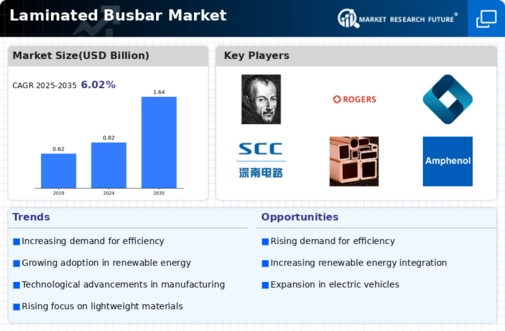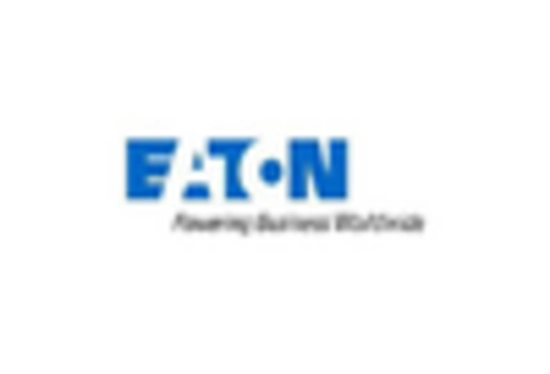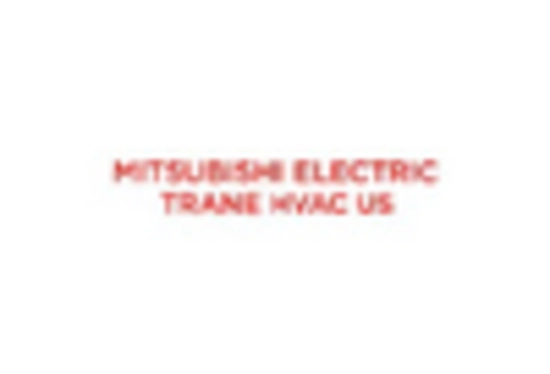-
Executive Summary
-
Market Introduction
-
Market Definition
-
Scope of the Study
-
Market Structure
-
Research Methodology
-
Primary Research
-
Secondary Research
-
Market size Estimation
-
Forecast Model
-
List of Assumptions
-
Limitations of the
-
study
-
Market
-
Insights
-
5
-
Market Dynamics
-
5.1
-
Introduction
-
5.2
-
Market Drivers
-
5.3
-
Market Restraints
-
5.4
-
Market Opportunities
-
5.5
-
Porter’s Five Forces Analysis
-
Chain Analysis
-
6
-
Threat of New Entrants
-
Bargaining Power of Buyers
-
Bargaining Power of Suppliers
-
Threat of Substitutes
-
Intensity of Rivalry
-
Value Chain/Supply
-
Global Laminated Busbar Market, By Insulation Material
-
Introduction
-
Epoxy Powder Coating
- Market Estimates & Forecast, 2022-2030
- Market Estimates
-
& Forecast, By Region, 2022-2030
-
Kapton
- Market Estimates & Forecast, 2022-2030
- Market Estimates
-
& Forecast, By Region, 2022-2030
-
Nomex
- Market Estimates & Forecast, 2022-2030
- Market Estimates &
-
Forecast, By Region, 2022-2030
-
Tedlar
- Market Estimates & Forecast, 2022-2030
- Market Estimates &
-
Forecast, By Region, 2022-2030
-
Mylar
- Market Estimates & Forecast, By Region,
- Market Estimates & Forecast, By Region,
-
6.6.1
-
Market Estimates & Forecast, 2022-2030
-
6.7
-
Teonex
-
6.7.1
-
Market Estimates & Forecast, 2022-2030
-
7
-
Global Laminated Busbar Market, By Conductor
-
Introduction
-
Copper
- Market Estimates & Forecast, 2022-2030
- Market Estimates
-
& Forecast, By Region, 2022-2030
-
Aluminum
- Market Estimates & Forecast, 2022-2030
- Market Estimates
-
& Forecast, By Region, 2022-2030
-
Global Laminated Busbar Market, By End-Use
-
Introduction
-
Power Electronics & Silicon
- Market Estimates & Forecast, By Region,
- Market Estimates & Forecast, By Region,
- Market Estimates & Forecast, By Region,
- Market Estimates & Forecast, By Region,
- Market Estimates & Forecast, By Region,
- Market Estimates & Forecast, 2022-2030
- Market Estimates &
-
Carbides
-
8.2.1
-
Market Estimates & Forecast, 2022-2030
-
8.3
-
Alternative Energy
-
8.3.1
-
Market Estimates & Forecast, 2022-2030
-
8.4
-
Telecom
-
8.4.1
-
Market Estimates & Forecast, 2022-2030
-
8.5
-
Datacenters
-
8.5.1
-
Market Estimates & Forecast, 2022-2030
-
8.6
-
Transportation
-
8.6.1
-
Market Estimates & Forecast, 2022-2030
-
8.7
-
Aerospace & Defense
-
Forecast, By Region, 2022-2030
-
Industrial
- Market Estimates & Forecast, 2022-2030
- Market Estimates &
-
Forecast, By Region, 2022-2030
-
Others
- Market Estimates & Forecast, 2022-2030
- Market Estimates &
-
Forecast, By Region, 2022-2030
-
Global Laminated Busbar Market, By Region
-
Introduction
-
North America
- Market Estimates & Forecast, By Insulation
-
Material, 2022-2030
-
9.2.2
-
Market Estimates & Forecast, By Conductor, 2022-2030
-
9.2.4
-
Market Estimates & Forecast, By End-Use,
-
Market Estimates & Forecast, By Country, 2022-2030
-
9.2.5.2
-
US
-
Market Estimates & Forecast, By Insulation Material,
-
Market Estimates & Forecast, By Conductor, 2022-2030
-
9.2.6
-
Canada
-
9.2.6.1
-
Market Estimates & Forecast, By End-Use,
-
Market Estimates & Forecast, By Insulation Material, 2022-2030
-
Forecast, By Conductor, 2022-2030
-
& Forecast, By Insulation Material, 2022-2030
-
9.2.7.3
-
Market Estimates &
-
Market Estimates & Forecast, By End-Use, 2022-2030
-
Mexico
-
Market Estimates
-
Market Estimates & Forecast, By Conductor,
-
Market Estimates & Forecast, By End-Use, 2022-2030
-
Europe
- Market Estimates & Forecast, By Insulation
-
Material, 2022-2030
-
9.3.2
-
Market Estimates & Forecast, By Conductor, 2022-2030
-
9.3.4
-
Market Estimates & Forecast, By End-Use,
-
Market Estimates & Forecast, By Country, 2022-2030
-
Material, 2022-2030
-
9.3.5.2
-
Germany
-
Market Estimates & Forecast, By Insulation
-
Market Estimates & Forecast, By Conductor, 2022-2030
-
9.3.6
-
UK
-
9.3.6.1
-
Market Estimates & Forecast, By End-Use,
-
Market Estimates & Forecast, By Insulation Material, 2022-2030
-
Forecast, By Conductor, 2022-2030
-
& Forecast, By Insulation Material, 2022-2030
-
9.3.7.3
-
Market Estimates &
-
Market Estimates & Forecast, By End-Use, 2022-2030
-
France
-
Market Estimates
-
Market Estimates & Forecast, By Conductor,
-
Market Estimates & Forecast, By End-Use, 2022-2030
-
Material, 2022-2030
-
9.3.8.2
-
Rest of Europe
-
Market Estimates & Forecast, By Insulation
-
Market Estimates & Forecast, By Conductor, 2022-2030
-
9.4
-
Asia-Pacific
-
9.4.1
-
Market Estimates & Forecast, By End-Use,
-
Market Estimates & Forecast, By Insulation Material, 2022-2030
-
Forecast, By Conductor, 2022-2030
-
& Forecast, By Country, 2022-2030
-
9.4.5.2
-
Market Estimates &
-
Market Estimates & Forecast, By End-Use, 2022-2030
-
Market Estimates
-
India
-
Market Estimates & Forecast, By Insulation Material,
-
Market Estimates & Forecast, By Conductor, 2022-2030
-
9.4.6
-
China
-
9.4.6.1
-
Market Estimates & Forecast, By End-Use,
-
Market Estimates & Forecast, By Insulation Material, 2022-2030
-
Forecast, By Conductor, 2022-2030
-
& Forecast, By Insulation Material, 2022-2030
-
9.4.7.3
-
Market Estimates &
-
Market Estimates & Forecast, By End-Use, 2022-2030
-
Japan
-
Market Estimates
-
Market Estimates & Forecast, By Conductor,
-
Market Estimates & Forecast, By End-Use, 2022-2030
-
Material, 2022-2030
-
9.4.8.2
-
South Korea
-
Market Estimates & Forecast, By Insulation
-
Market Estimates & Forecast, By Conductor, 2022-2030
-
9.4.9
-
Rest of Asia-Pacific
-
9.4.9.1
-
Market Estimates & Forecast, By End-Use,
-
Market Estimates & Forecast, By Insulation Material, 2022-2030
-
Forecast, By Conductor, 2022-2030
-
& Forecast, By Insulation Material, 2022-2030
-
9.5.3
-
Market Estimates &
-
Market Estimates & Forecast, By End-Use, 2022-2030
-
South America
- Market Estimates
- Market Estimates & Forecast, By Conductor,
-
Market Estimates & Forecast, By End-Use, 2022-2030
-
9.5.5
-
Brazil
-
9.5.5.1
-
Market Estimates & Forecast, By Region,
-
Market Estimates & Forecast, By Insulation Material, 2022-2030
-
Forecast, By Conductor 2022-2030
-
& Forecast, By Insulation Material, 2022-2030
-
9.5.6.3
-
Market Estimates &
-
Market Estimates & Forecast, By End-Use, 2022-2030
-
Argentina
-
Market Estimates
-
Market Estimates & Forecast, By Conductor
-
Market Estimates & Forecast, By End-Use, 2022-2030
-
Material, 2022-2030
-
9.5.7.2
-
Rest of South America
-
Market Estimates & Forecast, By Insulation
-
Market Estimates & Forecast, By Conductor 2022-2030
-
9.6
-
Middle East & Africa
-
& Forecast, By Conductor, 2022-2030
-
& Forecast, By Region, 2022-2030
-
Material, 2022-2030
-
9.6.5.2
-
Market Estimates & Forecast, By End-Use,
-
Market Estimates & Forecast, By Insulation Material, 2022-2030
-
Market Estimates
-
Market Estimates & Forecast, By End-Use, 2022-2030
-
Market Estimates
-
Saudi Arabia
-
Market Estimates & Forecast, By Insulation
-
Market Estimates & Forecast, By Conductor 2022-2030
-
9.6.6
-
UAE
-
9.6.6.1
-
Market Estimates & Forecast, By End-Use,
-
Market Estimates & Forecast, By Insulation Material, 2022-2030
-
Forecast, By Conductor 2022-2030
-
& Forecast, By Insulation Material, 2022-2030
-
9.6.7.3
-
Market Estimates &
-
Market Estimates & Forecast, By End-Use, 2022-2030
-
Qatar
-
Market Estimates
-
Market Estimates & Forecast, By Conductor
-
Market Estimates & Forecast, By End-Use, 2022-2030
-
Material, 2022-2030
-
9.6.8.2
-
South Africa
-
Market Estimates & Forecast, By Insulation
-
Market Estimates & Forecast, By Conductor 2022-2030
-
9.6.9
-
Rest of Middle East & Africa
-
& Forecast, By Conductor 2022-2030
-
Market Estimates & Forecast, By End-Use,
-
Market Estimates & Forecast, By Insulation Material, 2022-2030
-
Market Estimates
-
Market Estimates & Forecast, By End-Use, 2022-2030
-
Competitive Landscape
-
Competitive Scenario
-
Competitive Benchmarking
-
of the Global Laminated Busbar Market
-
Major Growth Strategy in the Global Laminated Busbar
-
Market
-
10.4
-
Market Share Analysis: Global Laminated Busbar Market
-
Mersen: The Leading Player in terms of Number
-
of Developments in Global Laminated Busbar Market
-
New Product Development in Laminated Busbar
-
Market
-
10.7
-
Mergers & Acquisitions in Laminated Busbar Market
-
Contracts & Agreements in Laminated Busbar
-
Market
-
10.9
-
Expansions & Investments in Laminated Busbar Market
-
Company Profile
-
Mersen (France)
- Company Overview
- Product/Services Offering
- Financial Overview
- Key Developments
- Strategy
- SWOT Analysis
-
Rogers (Canada)
- Company Overview
- Product /Services
- Company Overview
- Product /Services Offering
- Financial Overview
- Key Developments
- Strategy
- SWOT Analysis
-
Offering
-
11.2.3
-
Financial Overview
-
11.2.4
-
Key Developments
-
11.2.5
-
Strategy
-
11.2.6
-
SWOT Analysis
-
11.3
-
Zhuzhou Crrc Times Electric (China)
-
OEM Automatic (UK)
- Company Overview
- Product /Services
- Company Overview
- Product /Services Offering
- Financial Overview
- Key Developments
- Strategy
- SWOT Analysis
-
Offering
-
11.4.3
-
Financial Overview
-
11.4.4
-
Key Developments
-
11.4.5
-
Strategy
-
11.4.6
-
SWOT Analysis
-
11.5
-
Electronic Systems Packaging (US)
-
Suzhou West Deane Machinery (China)
- Company Overview
- Product /Services
- Company Overview
- Product /Services Offering
- Financial Overview
- Key Developments
- Strategy
- SWOT Analysis
-
Offering
-
11.6.3
-
Financial Overview
-
11.6.4
-
Key Developments
-
11.6.5
-
Strategy
-
11.6.6
-
SWOT Analysis
-
11.7
-
Shennan Circuits (China)
-
Shenzhen Woer New Energy (China)
- Company Overview
- Product /Services
- Financial Overview
- Key Developments
- Strategy
- SWOT Analysis
-
Offering
-
11.8.3
-
Financial Overview
-
11.8.4
-
Key Developments
-
11.8.5
-
Strategy
-
11.8.6
-
SWOT Analysis
-
11.9
-
Jans Copper (India)
-
11.9.1
-
Company Overview
-
11.9.2
-
Product /Services Offering
-
Storm Power Conductors (US)
- Company Overview
- Product /Services
- Financial Overview
- Key Developments
- Strategy
- SWOT Analysis
-
Offering
-
11.10.3
-
Financial Overview
-
11.10.4
-
Key Developments
-
11.10.5
-
Strategy
-
11.10.6
-
SWOT Analysis
-
11.11
-
Ryoden Kasei (Japan)
-
11.11.1
-
Company Overview
-
11.11.2
-
Product /Services Offering
-
Idealac (Jordan)
- Company Overview
- Product /Services Offering
- Financial Overview
- Key Developments
- Strategy
- SWOT Analysis
-
Sun.King Power
- Financial Overview
- Key Developments
- Strategy
- SWOT Analysis
-
Electronics (China)
-
11.13.1
-
Company Overview
-
11.13.2
-
Product /Services Offering
-
Amphenol (US)
- Company Overview
- Product /Services Offering
- Financial Overview
- Key Developments
- Strategy
- SWOT Analysis
-
Methode Electronics
- Financial Overview
- Key Developments
- Strategy
- SWOT Analysis
-
(US)
-
11.15.1
-
Company Overview
-
11.15.2
-
Product /Services Offering
-
-
List of Tables
-
Global Laminated Busbar Market, By Region,
-
North America Laminated Busbar Market, By Country, 2022-2030
-
(USD Million)
-
Table
-
Europe Laminated Busbar Market, By Country, 2022-2030 (USD Million)
-
Asia-Pacific
-
Laminated Busbar Market, By Country, 2022-2030 (USD Million)
-
Middle East & Africa Laminated Busbar
-
Market, By Country, 2022-2030 (USD Million)
-
South America Laminated Busbar Market, By
-
Country, 2022-2030 (USD Million)
-
Global Laminated Busbar Market, By Insulation Material, 2022-2030
-
(USD Million)
-
Table
-
North America Laminated Busbar Market, By Insulation Material, 2022-2030 (USD
-
Million)
-
Table
-
Europe Laminated Busbar Market, By Insulation Material, 2022-2030 (USD Million)
-
South America
-
Laminated Busbar Market, By Insulation Material, 2022-2030 (USD Million)
-
Middle East
-
& Africa Laminated Busbar Market, By Insulation Material, 2022-2030 (USD Million)
-
Global Laminated
-
Busbar Market, By Conductor, 2022-2030 (USD Million)
-
North America Laminated Busbar Market, By
-
Conductor, 2022-2030 (USD Million)
-
Europe Laminated Busbar Market, By Conductor, 2022-2030
-
(USD Million)
-
Table
-
Asia-Pacific Laminated Busbar Market, By Conductor, 2022-2030 (USD Million)
-
Middle East
-
& Africa Laminated Busbar Market, By Conductor, 2022-2030 (USD Million)
-
South America
-
Laminated Busbar Market, By Conductor, 2022-2030 (USD Million)
-
Global Laminated Busbar
-
Market, By End-Use, 2022-2030 (USD Million)
-
North America Laminated Busbar Market, By
-
End-Use, 2022-2030 (USD Million)
-
Europe Laminated Busbar Market, By End-Use, 2022-2030 (USD
-
Million)
-
Table
-
Asia-Pacific Laminated Busbar Market, By End-Use, 2022-2030 (USD Million)
-
Middle East
-
& Africa Laminated Busbar Market, By End-Use, 2022-2030 (USD Million)
-
South America
-
Laminated Busbar Market, By End-Use, 2022-2030 (USD Million)
-
Global Laminated Busbar Market: By Region,
-
North America Laminated Busbar Market, By Country, 2022-2030
-
(USD Million)
-
Table
-
North America Laminated Busbar Market, By Insulation Material, 2022-2030 (USD
-
Million)
-
Table
-
North America Laminated Busbar Market, By Conductor, 2022-2030 (USD Million)
-
North America
-
Laminated Busbar Market, By End-Use, 2022-2030 (USD Million)
-
US Laminated Busbar Market, By Insulation
-
Material, 2022-2030 (USD Million)
-
US Laminated Busbar Market, By Conductor, 2022-2030 (USD Million)
-
US Laminated
-
Busbar Market, By End-Use, 2022-2030 (USD Million)
-
Canada Laminated Busbar Market, By Insulation
-
Material, 2022-2030 (USD Million)
-
Canada Laminated Busbar Market, By Conductor, 2022-2030 (USD
-
Million)
-
Table
-
Canada Laminated Busbar Market, By End-Use, 2022-2030 (USD Million)
-
Mexico Laminated
-
Busbar Market, By Insulation Material, 2022-2030 (USD Million)
-
Mexico Laminated Busbar
-
Market, By Conductor, 2022-2030 (USD Million)
-
Mexico Laminated Busbar Market, By End-Use,
-
Europe Laminated Busbar Market, By Country, 2022-2030 (USD
-
Million)
-
Table
-
Europe Laminated Busbar Market, By Insulation Material, 2022-2030 (USD Million)
-
Europe Laminated
-
Busbar Market, By Conductor, 2022-2030 (USD Million)
-
Europe Laminated Busbar Market, By End-Use,
-
Germany Laminated Busbar Market, By Insulation Material, 2022-2030
-
(USD Million)
-
Table
-
Germany Laminated Busbar Market, By Conductor, 2022-2030 (USD Million)
-
Germany Laminated
-
Busbar Market, By End-Use, 2022-2030 (USD Million)
-
UK Laminated Busbar Market, By Insulation
-
Material, 2022-2030 (USD Million)
-
UK Laminated Busbar Market, By Conductor, 2022-2030 (USD Million)
-
UK Laminated
-
Busbar Market, By End-Use, 2022-2030 (USD Million)
-
France Laminated Busbar Market, By Insulation
-
Material, 2022-2030 (USD Million)
-
France Laminated Busbar Market, By Conductor, 2022-2030 (USD
-
Million)
-
Table
-
France Laminated Busbar Market, By End-Use, 2022-2030 (USD Million)
-
Rest of Europe
-
Laminated Busbar Market, By Insulation Material, 2022-2030 (USD Million)
-
Rest of Europe
-
Laminated Busbar Market, By Conductor, 2022-2030 (USD Million)
-
Rest of Europe Laminated
-
Busbar Market, By End-Use, 2022-2030 (USD Million)
-
Asia-Pacific Laminated Busbar Market, By
-
Country, 2022-2030 (USD Million)
-
Asia-Pacific Laminated Busbar Market, By Insulation Material,
-
Asia-Pacific Laminated Busbar Market, By Conductor, 2022-2030
-
(USD Million)
-
Table
-
Asia-Pacific Laminated Busbar Market, By End-Use, 2022-2030 (USD Million)
-
India Laminated
-
Busbar Market, By Insulation Material, 2022-2030 (USD Million)
-
India Laminated Busbar
-
Market, By Conductor, 2022-2030 (USD Million)
-
India Laminated Busbar Market, By End-Use,
-
China Laminated Busbar Market, By Insulation Material, 2022-2030
-
(USD Million)
-
Table
-
China Laminated Busbar Market, By Conductor, 2022-2030 (USD Million)
-
China Laminated
-
Busbar Market, By End-Use, 2022-2030 (USD Million)
-
Japan Laminated Busbar Market, By Insulation
-
Material, 2022-2030 (USD Million)
-
Japan Laminated Busbar Market, By Conductor, 2022-2030 (USD
-
Million)
-
Table
-
Japan Laminated Busbar Market, By End-Use, 2022-2030 (USD Million)
-
South Korea
-
Laminated Busbar Market, By Insulation Material, 2022-2030 (USD Million)
-
South Korea
-
Laminated Busbar Market, By Conductor, 2022-2030 (USD Million)
-
South Korea Laminated
-
Busbar Market, By End-Use, 2022-2030 (USD Million)
-
Rest of Asia-Pacific Laminated Busbar Market,
-
By Insulation Material, 2022-2030 (USD Million)
-
Rest of Asia-Pacific Laminated Busbar Market,
-
By Conductor, 2022-2030 (USD Million)
-
Rest of Asia-Pacific Laminated Busbar Market, By
-
End-Use, 2022-2030 (USD Million)
-
Middle East & Africa Laminated Busbar Market, By Country,
-
Middle East & Africa Laminated Busbar Market, By Insulation
-
Material, 2022-2030 (USD Million)
-
Middle East & Africa Laminated Busbar Market, By Conductor,
-
Middle East & Africa Laminated Busbar Market, By End-Use,
-
UAE Laminated Busbar Market, By Insulation Material, 2022-2030
-
(USD Million)
-
Table
-
UAE Laminated Busbar Market, By Conductor, 2022-2030 (USD Million)
-
UAE Laminated
-
Busbar Market, By End-Use, 2022-2030 (USD Million)
-
Saudi Arabia Laminated Busbar Market, By
-
Insulation Material, 2022-2030 (USD Million)
-
Saudi Arabia Laminated Busbar Market, By
-
Conductor, 2022-2030 (USD Million)
-
Saudi Arabia Laminated Busbar Market, By End-Use,
-
Qatar Laminated Busbar Market, By Insulation Material, 2022-2030
-
(USD Million)
-
Table
-
Qatar Laminated Busbar Market, By Conductor, 2022-2030 (USD Million)
-
Qatar Laminated
-
Busbar Market, By End-Use, 2022-2030 (USD Million)
-
South Africa Laminated Busbar Market, By
-
Insulation Material, 2022-2030 (USD Million)
-
South Africa Laminated Busbar Market, By
-
Conductor, 2022-2030 (USD Million)
-
South Africa Laminated Busbar Market, By End-Use,
-
Rest of the Middle East & Africa Laminated Busbar Market,
-
By Insulation Material, 2022-2030 (USD Million)
-
Rest of the Middle East & Africa Laminated
-
Busbar Market, By Conductor, 2022-2030 (USD Million)
-
Rest of the Middle East & Africa Laminated
-
Busbar Market, By End-Use, 2022-2030 (USD Million)
-
South America Laminated Busbar Market, By
-
Country, 2022-2030 (USD Million)
-
South America Laminated Busbar Market, By Insulation Material,
-
South America Laminated Busbar Market, By Conductor, 2022-2030
-
(USD Million)
-
Table
-
South America Laminated Busbar Market, By End-Use, 2022-2030 (USD Million)
-
Brazil Laminated
-
Busbar Market, By Insulation Material, 2022-2030 (USD Million)
-
Brazil Laminated Busbar
-
Market, By Conductor, 2022-2030 (USD Million)
-
Brazil Laminated Busbar Market, By End-Use,
-
Argentina Laminated Busbar Market, By Insulation Material,
-
Argentina Laminated Busbar Market, By Conductor, 2022-2030
-
(USD Million)
-
Table
-
Argentina Laminated Busbar Market, By End-Use, 2022-2030 (USD Million)
-
Rest of South
-
America Laminated Busbar Market, By Insulation Material, 2022-2030 (USD Million)
-
Rest of South
-
America Laminated Busbar Market, By Conductor, 2022-2030 (USD Million)
-
Rest of South
-
America Laminated Busbar Market, By End-Use, 2022-2030 (USD Million)
-
List of Figures
-
RESEARCH PROCESS
-
OF MRFR
-
FIGURE
-
TOP DOWN & BOTTOM UP APPROACH
-
MARKET DYNAMICS
-
IMPACT ANALYSIS: MARKET DRIVERS
-
IMPACT ANALYSIS:
-
MARKET RESTRAINTS
-
FIGURE
-
PORTER’S FIVE FORCES ANALYSIS
-
VALUE CHAIN ANALYSIS
-
GLOBAL LAMINATED BUSBAR MARKET SHARE, BY
-
INSULATION MATERIAL, 2017 (%)
-
GLOBAL LAMINATED BUSBAR MARKET, BY INSULATION MATERIAL, 2022-2030
-
(USD Million)
-
FIGURE
-
GLOBAL LAMINATED BUSBAR MARKET SHARE, BY CONDUCTOR, 2022 (%)
-
GLOBAL LAMINATED BUSBAR
-
MARKET, BY CONDUCTOR, 2022-2030 (USD Million)
-
GLOBAL LAMINATED BUSBAR MARKET SHARE, BY
-
END-USE, 2022 (%)
-
FIGURE
-
GLOBAL LAMINATED BUSBAR MARKET, BY END-USE, 2022-2030 (USD Million)
-
GLOBAL LAMINATED
-
BUSBAR MARKET SHARE (%), BY REGION, 2022
-
GLOBAL LAMINATED BUSBAR MARKET, BY REGION, 2022-2030
-
(USD Million)
-
FIGURE
-
NORTH AMERICA LAMINATED BUSBAR MARKET SHARE (%), 2022
-
NORTH AMERICA LAMINATED BUSBAR MARKET,
-
BY COUNTRY, 2022-2030 (USD Million)
-
EUROPE LAMINATED BUSBAR MARKET SHARE (%), 2022
-
EUROPE LAMINATED
-
BUSBAR MARKET, BY COUNTRY, 2022-2030 (USD Million)
-
ASIA PACIFIC LAMINATED BUSBAR MARKET SHARE
-
(%), 2022
-
FIGURE
-
ASIA PACIFIC LAMINATED BUSBAR MARKET, BY COUNTRY, 2022-2030 (USD Million)
-
MIDDLE EAST
-
& AFRICA LAMINATED BUSBAR MARKET SHARE (%), 2022
-
MIDDLE EAST & AFRICA LAMINATED BUSBAR
-
MARKET, BY REGION, 2022-2030 (USD Million)
-
SOUTH AMERICA LAMINATED BUSBAR MARKET SHARE
-
(%), 2022
-
FIGURE
-
SOUTH AMERICA LAMINATED BUSBAR MARKET, BY COUNTRY, 2022-2030 (USD Million)









Leave a Comment